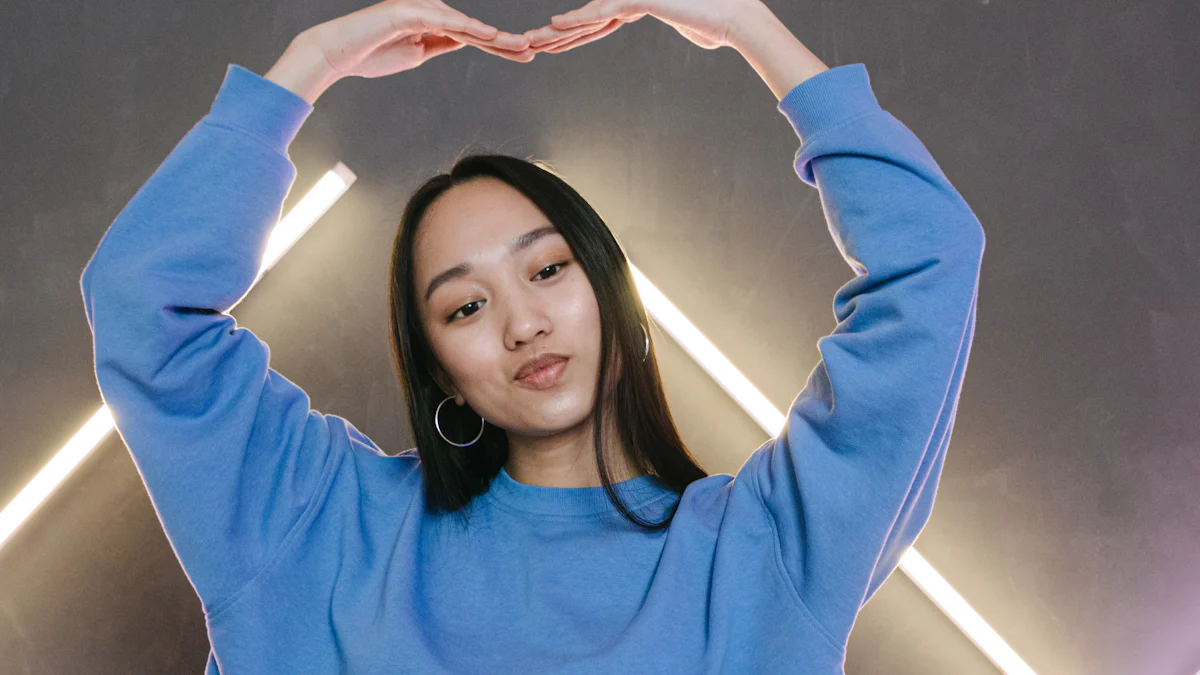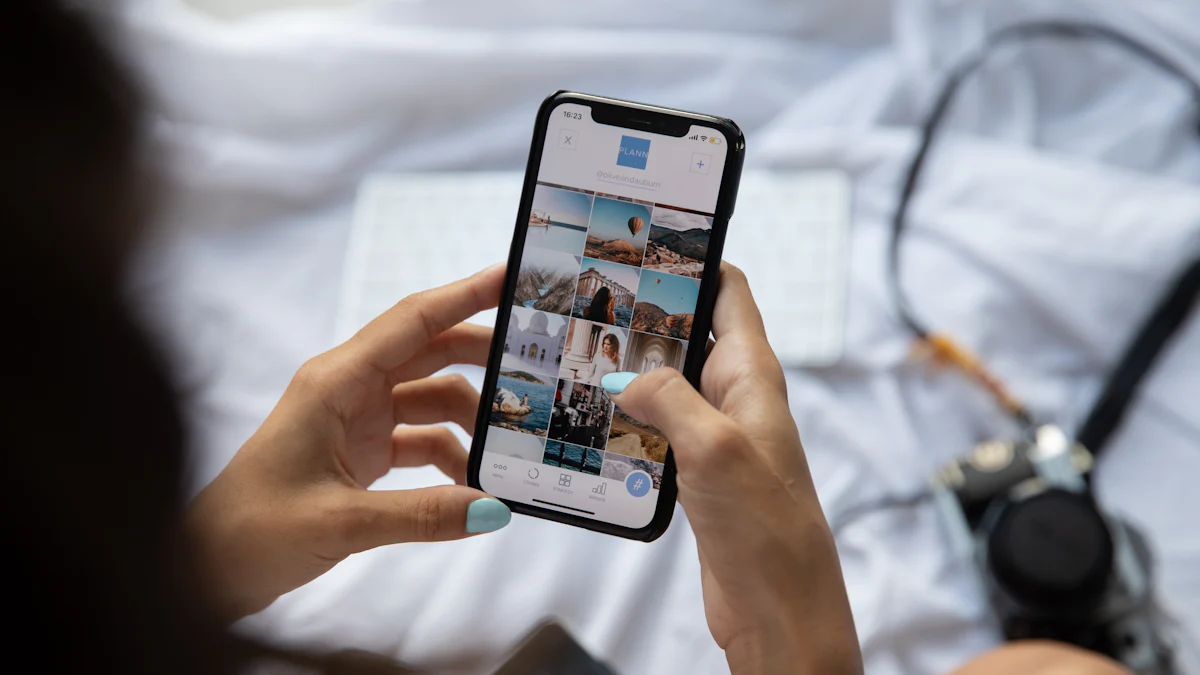How Influencer Marketing Will Evolve in 2025

Influencer marketing has transformed how brands connect with audiences. It’s no longer just about flashy ads—it’s about building trust and creating authentic connections. Did you know that a quarter of brands now spend over 40% of their marketing budget on influencer campaigns? This shift shows how critical influencers have become in digital strategies. They enhance credibility, boost engagement, and even improve SEO. With spending projected to hit $9.29 billion in 2025, staying ahead of influencer marketing trends is essential. Whether you’re a brand or an influencer marketing company, adapting to these changes will keep you competitive.
Key Influencer Marketing Trends for 2025

AI Integration in Influencer Marketing
AI-driven influencer discovery and campaign optimization
AI is revolutionizing how you approach influencer marketing. With advanced tools, you can now analyze vast amounts of data to find the perfect influencers for your brand. AI tools don’t just stop at discovery—they also predict how well partnerships will perform. Real-time optimization ensures your influencer campaigns stay on track and deliver results.
AI influencers are also gaining traction. They offer cost-effective alternatives to traditional celebrity endorsements while maintaining high engagement. For example, Lenovo paired AI influencer Imma with human influencers to create a futuristic brand image. Similarly, PUMA collaborated with virtual influencers Maie and Kim Zulu to promote their Kosmo Rider sneakers, blending digital and physical identities.
| Market Segment | CAGR (%) |
|---|---|
| Overall Influencer Marketing Platform | 31.78% (2024-2029) |
| AI in Social Media Market | 36.2% (by 2029) |
Generative AI for content creation and personalization
Generative AI is making content creation faster and more personalized. Imagine crafting influencer recommendations or multichannel campaigns tailored to individual preferences. AI can generate captions, videos, and even entire posts that resonate with your audience. This technology ensures your influencer marketing campaigns feel fresh and relevant, keeping your brand ahead of the curve.
The Rise of Micro- and Nano-Influencers
Engaging niche audiences with higher authenticity
Micro-influencers are becoming the go-to choice for brands. Why? Their smaller, highly engaged communities make their content feel more authentic. With an average engagement rate of 3.86%, micro-influencers outperform macro-influencers, who average just 1.63%. Their followers trust their influencer recommendations, making them ideal for niche markets.
Building trust through smaller, targeted communities
Smaller influencers excel at building trust. Their audiences see them as relatable and genuine, which leads to stronger connections. By focusing on authenticity, micro-influencers help brands foster meaningful relationships with their target audience.
Diverse and Authentic Content as a Priority
The demand for inclusive representation in campaigns
Consumers expect brands to focus on diversity and representation in their influencer marketing. Campaigns now feature creators from various backgrounds, ethnicities, genders, and abilities. This inclusivity resonates with broader audiences and creates a sense of belonging.
Transparency and genuine storytelling as consumer expectations
Audiences crave authenticity. In fact, 77% of consumers are more likely to engage with content that feels genuine and relatable. By emphasizing transparency and storytelling, you can meet these expectations and build lasting connections with your audience.
The Growth of Video and Live Streaming
Platforms prioritizing video formats for engagement
Video content is taking over the internet, and platforms like TikTok and Instagram are leading the charge. In 2022, video made up 82% of all internet traffic, a significant jump from 75% in 2017. This shift shows how much people love watching videos. Platforms have adapted by prioritizing short-form and dynamic video formats. Instagram introduced Reels, while TikTok became a global sensation with its bite-sized, engaging clips.
The growing popularity of short videos has made them a must-have in influencer marketing. Brands now use these formats to connect with audiences in creative ways. User-generated video content, which started in the early 2000s, has evolved into a powerful tool for influencer campaigns. Whether it’s a 15-second clip or a live stream, video content keeps viewers hooked and drives engagement like never before.
| Statistic Description | Percentage/Value |
|---|---|
| Marketers using live events | 35% |
| Businesses using live streaming platforms for videos | 47% |
| Marketers wanting to try live streaming | 14% |
Real-time interaction through live shopping and events
Live shopping integrations are changing the game. Imagine watching your favorite influencer showcase a product and buying it instantly without leaving the app. This trend is growing fast, with live shopping events becoming a key part of influencer marketing campaigns. Real-time interaction makes the experience more personal and engaging.
Platforms like Instagram and TikTok now offer live shopping features, allowing influencers to connect with their followers while driving sales. These events feel like a conversation, making it easier for audiences to trust influencer recommendations. As live shopping continues to grow, it’s clear that real-time interaction is the future of e-commerce.
Social Commerce and Direct Sales
Influencers driving purchases through social platforms
Social commerce is booming, and influencers are at the center of it. Platforms like Instagram, TikTok, and YouTube now let influencers tag products in their posts. This feature makes it easy for followers to shop directly from the content they love. Influencers are no longer just promoting products—they’re driving direct sales.
Brands are also forming long-term partnerships with influencers to boost their social commerce strategies. These collaborations create trust and loyalty, making it easier for audiences to make purchases. Whether it’s a beauty product or a tech gadget, influencers are turning their content into a seamless shopping experience.
The integration of e-commerce features into influencer campaigns
E-commerce features are becoming a natural part of influencer campaigns. Live shopping, virtual try-ons, and creator integrations are just a few examples. Virtual try-ons, powered by augmented reality, let customers see how a product looks or works before buying it. This feature has significantly increased conversion rates.
Creator integrations allow influencers to sell products directly from their profiles. These tools make influencer marketing more effective by blending content creation with direct sales. As these features continue to evolve, they’ll play a bigger role in shaping the future of social commerce.
Influencer Marketing Strategy Shifts for Brands
Leveraging Full-Funnel Influencer Campaigns
Aligning influencers with every stage of the customer journey
You can no longer rely on influencers just for brand awareness. Full-funnel influencer campaigns are changing the game by engaging customers at every stage of their journey. From introducing your product to driving conversions, influencers can guide potential buyers seamlessly. They can even encourage repeat purchases by fostering a sense of community and trust.
Here’s a quick look at why full-funnel campaigns are so effective:
| Benefit Description | Reason for Benefit |
|---|---|
| Enhances brand visibility, engagement, and sales | Full-funnel campaigns can reach customers at various stages of their buying journey. |
| Encourages repeat orders from existing customers when influencers share products | Influencers can create a sense of community and trust around the brand. |
| Provides fresh and creative marketing ideas from experienced influencers | Influencers can offer new perspectives and innovative strategies for promoting products. |
| Cost-effective compared to traditional advertising methods | Influencer campaigns can be significantly cheaper than other marketing strategies. |
| Educates potential customers on product usage in a non-salesy manner | Influencers can create engaging content that informs customers about the product effectively. |
Measuring ROI and performance-based outcomes
Tracking the success of your influencer marketing strategy is crucial. Tools like Google Analytics and UTM tracking help you measure website traffic and conversions. Influencer marketing platforms, such as Meltwater, automate KPI tracking, including reach and impressions. You can also use promotional codes to monitor sales directly tied to influencer recommendations. These tools ensure you’re getting the most out of your campaigns.
Building Long-Term Partnerships with Influencers
Strengthening brand loyalty through consistent collaborations
One-off campaigns are losing their charm. Long-term influencer partnerships are the way forward. When you collaborate consistently with influencers, you build credibility and trust with their audience. Take Nike and Cristiano Ronaldo, for example. Their partnership, which began in 2003, has created a strong bond between the brand and its fans.
Creating authentic relationships with audiences
Long-term collaborations also allow influencers to share more genuine stories about your brand. This authenticity resonates with their followers, making your influencer content more impactful. Rihanna’s partnership with Fenty Beauty is a great example. Her involvement has positioned the brand as a leader in inclusivity, creating a loyal community of customers.
Focusing on Community-Driven Marketing
Encouraging user-generated content and participation
Your audience wants to feel involved. By encouraging user-generated content, you can turn your customers into brand advocates. Glossier’s Into The Gloss community is a perfect example. It started as a beauty blog and evolved into a space where users share skincare routines and feedback. This approach not only boosts engagement but also reduces your reliance on expensive campaigns.
Building influencer-led communities for deeper engagement
Influencers can help you create vibrant communities around your brand. Rare Beauty by Selena Gomez has done this brilliantly by focusing on self-expression and mental health. These communities foster genuine connections, enhance loyalty, and even provide valuable feedback to improve your offerings.
Community-driven marketing doesn’t just humanize your brand—it makes your customers feel heard and valued.
Expanding into B2B Influencer Marketing
Reaching professional audiences through niche influencers
B2B influencer marketing is gaining momentum as brands realize its potential to connect with professional audiences. Unlike traditional influencer marketing, this approach focuses on niche influencers who specialize in specific industries. These influencers bring credibility and expertise, making them ideal for engaging decision-makers.
Industries like technology, health, and financial services are leading the charge. Each sector has unique growth opportunities:
| Industry | Growth Focus |
|---|---|
| Technology | Emphasis on authenticity and long-term partnerships |
| Health | Engagement with niche influencers |
| Financial Services | Leveraging emerging platforms like TikTok and LinkedIn |
For example, in the tech industry, influencers often highlight complex solutions in a way that feels relatable. In health, niche influencers help brands build trust by sharing authentic experiences. Financial services are also tapping into platforms like TikTok and LinkedIn to reach younger professionals and decision-makers.
By partnering with the right influencers, you can position your brand as a trusted authority in your field. This strategy not only boosts visibility but also fosters meaningful connections with your target audience.
Leveraging thought leaders for industry-specific campaigns
Thought leaders are the backbone of successful B2B campaigns. They don’t just promote products—they educate, inspire, and build trust. Platforms like TikTok and podcasts are becoming popular tools for these influencers to share their expertise.
Take Eric Kimberling, for instance. He simplifies digital transformation concepts on TikTok, making them accessible to a wider audience. Similarly, Scott Hadley uses the same platform to provide practical advice on supply chain management. Podcasts are another powerful medium. Christopher Luft hosts a cybersecurity podcast, while James Somauroo discusses digital health innovations. These thought leaders demonstrate how you can use modern platforms to engage audiences and establish authority.
When you collaborate with thought leaders, you’re not just running a campaign—you’re creating a knowledge-sharing experience. This approach helps you build trust and credibility, which are essential for long-term success in B2B influencer marketing.
Challenges and Opportunities in Influencer Marketing

Challenges in Influencer Marketing
AI oversaturation and its impact on creativity
AI is everywhere in influencer marketing, but too much of it can hurt creativity. Automation often leads to campaigns that feel impersonal or disconnected. You might notice a lack of the human touch that makes content relatable. Plus, ethical concerns arise when AI blurs the line between real influencers and virtual personas. This can make your audience question the authenticity of your brand. Privacy issues also pop up since AI tools rely on large amounts of personal data. If your audience feels their data isn’t safe, trust in your campaigns could take a hit.
Content ownership disputes between brands and influencers
Who owns the content—brands or influencers? This question creates tension in partnerships. Influencers often want to retain rights to their work, while brands aim to control how it’s used. Without clear agreements, disputes can arise, delaying campaigns or damaging relationships. To avoid this, you need to establish clear contracts that outline ownership and usage rights upfront.
Navigating stricter regulatory compliance
Regulations around influencer marketing are tightening. Influencers must disclose paid partnerships using tags like #Ad or #Sponsored. These disclosures need to be clear and visible, not buried in hashtags or small text. If you fail to comply, your brand could face fines or lose consumer trust. Transparency is key to staying on the right side of the law and maintaining credibility.
Opportunities for Growth
The rise of live shopping and social commerce
Live shopping integrations are transforming how you sell products. Imagine hosting a live event where influencers showcase your products, and viewers can buy instantly. This trend is growing fast, with live shopping sales in the U.S. projected to increase by 36% by 2026. Gen Z loves these events for their exclusive discounts and entertainment value. Adding gamification, like spin-to-win promotions, can make these events even more engaging. Collaborating with influencers during live shopping builds trust and simplifies purchasing decisions for your audience.
Expanding into emerging platforms and markets
New platforms like TikTok and LinkedIn are reshaping influencer marketing. TikTok’s growing popularity of short videos makes it perfect for engaging younger audiences. LinkedIn, on the other hand, is ideal for B2B campaigns. By exploring these platforms, you can tap into fresh markets and connect with diverse audiences. Co-creating content with influencers on these platforms can further enhance your reach and relevance.
Using data analytics for hyper-personalized campaigns
Data analytics is your secret weapon for creating campaigns that truly resonate. By analyzing audience behavior, you can craft hyper-personalized content that feels tailor-made. This approach not only boosts engagement but also improves ROI. Tools powered by AI can help you predict trends, optimize campaigns, and deliver the right message at the right time. Personalization is no longer optional—it’s essential for standing out in a crowded market.
The future of influencer marketing lies in balancing challenges with opportunities. By addressing issues like AI oversaturation and regulatory compliance, you can build trust. At the same time, leveraging trends like live shopping and emerging platforms will keep your strategies fresh and effective.
The future of influencer marketing is packed with exciting possibilities. You’ve seen how trends like AI, micro-influencers, and live shopping are reshaping the landscape. Strategies like full-funnel campaigns and long-term partnerships can help you stay ahead. Challenges like AI oversaturation and stricter regulations might seem daunting, but they also push you to innovate.
Adaptability is your secret weapon. Stay curious, experiment with new platforms, and focus on authentic connections. Start applying these strategies today to keep your brand competitive and ready for what’s next.
FAQ
What is the difference between micro- and nano-influencers?
Micro-influencers have 10,000–100,000 followers, while nano-influencers have fewer than 10,000. Nano-influencers focus on hyper-niche audiences, offering higher engagement rates. Micro-influencers balance reach and authenticity, making them ideal for brands targeting specific but slightly larger audiences.
How can I measure the success of an influencer campaign?
Track metrics like engagement rates, website traffic, and conversions. Use tools like Google Analytics or influencer platforms to monitor performance. Promo codes and affiliate links also help you directly attribute sales to specific influencers.
Are virtual influencers as effective as human influencers?
Yes, virtual influencers can be effective. They offer consistency, creative control, and cost-efficiency. However, they lack the human relatability that builds trust. Use them for futuristic or tech-focused campaigns, but balance them with real influencers for authenticity.
How do I ensure compliance with influencer marketing regulations?
Make sure influencers disclose paid partnerships clearly using tags like #Ad or #Sponsored. Educate them on FTC guidelines and review their content before posting. Transparency builds trust and keeps your campaigns legally safe.
Should I focus on one platform or multiple for influencer marketing?
It depends on your audience. If your target group is active on one platform, focus there. For broader reach, diversify across platforms like Instagram, TikTok, and YouTube. Tailor your content to fit each platform’s strengths.
💡 Tip: Start small, test results, and expand to other platforms as you grow.
See Also
Key Influencer Marketing Trends To Follow In 2024
Essential Influencer Marketing Platforms For Your 2024 Strategy
Effective TikTok Influencer Marketing Techniques For 2024
